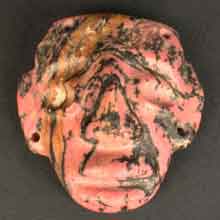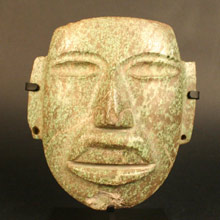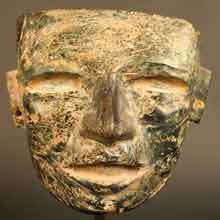The Aztec used masks during public ceremonies, religious festivals and even during battles. The masks were objects of privilege and were also used as offerings to the deities. This artistic tradition began in the Pre-Classic period. Many masks and stone pectorals have been found associated with the Olmec culture, which flourished in the Gulf of Mexico around 1000 BC, and whose influential iconography spread to the Mexican highlands.
Olmec masks have characteristic grimaces. Their faces appear slightly disfigured, suggesting a transformation into birds, lizards and felines. This supernatural union between humans and nature was probably the nucleus of their famous cosmology. Masks are common in Teotihuacán, an urban culture in the Mexican high plains, dating from the first century AD. Although they have been found as funerary offerings, little is know about their use. Unlike the Olmec masks, the Teotihuacán masks are confined to the human realm, with serene, almost blank expressions.


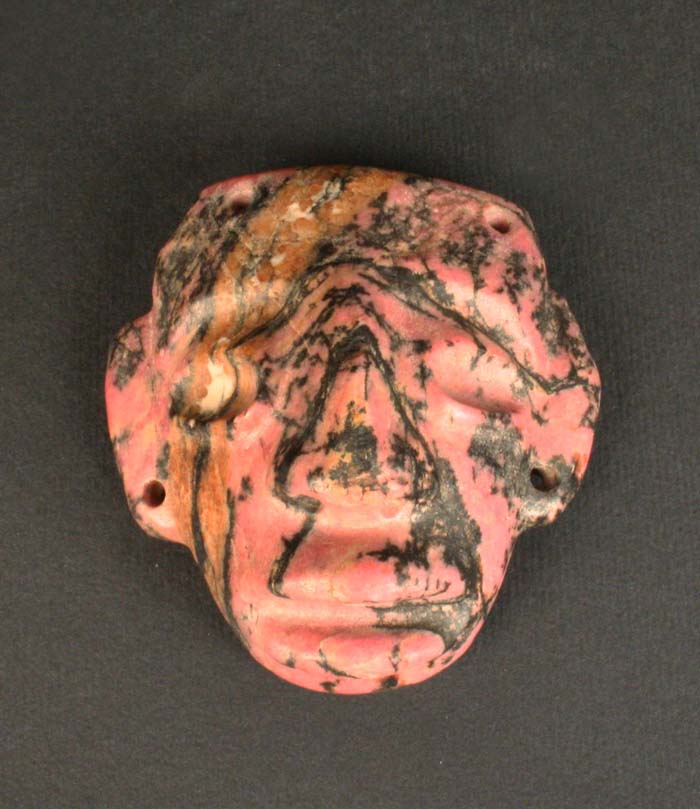
Materials: Stone
Clásico 300 - 1000 dC
Measures: 75mm de alto x 75 mm de ancho
Part Code: MCHAP 0976
See the profile of this piece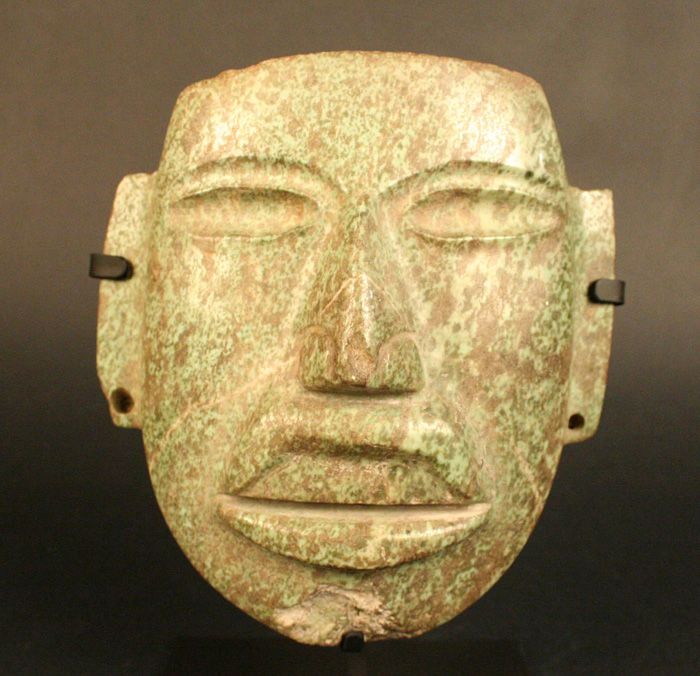
Materials: Stone
Formativo Tardío 400 - 1 a.C. Estilo Olmecoide de Guerrero.
Measures: 155 mm de alto x 140 mm de ancho
Part Code: MCHAP 2060
See the profile of this piece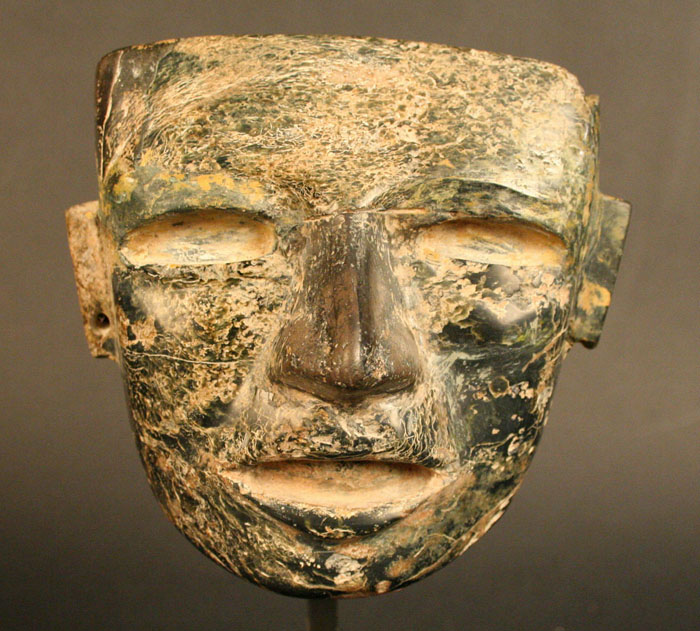
Materials: Stone
Clásico 0- 600 d.C.
Measures: 123mm de alto x 127mm de ancho
Part Code: MCHAP 3131
See the profile of this piece



































